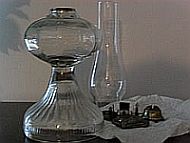
*Let There Be Light*
I became interested in preparedness ten or twelve years ago when I realized that if the electrical grid went down for an extended period due to any cause, natural or manmade, modern life would change in many ways. Not the least of which would be how life is lived after dark. Look at a nightside satellite image of the earth, especially along the coasts of nearly all continents, and think about the amount of electricity all those lights represent, it will boggle the mind. I know many preparedness-oriented folks have generators to use for light, heat, cooking in a disaster situation. To put it mildly my husband would not have been on board had I suggested we get one. Plus I myself am concerned about the noise made by a generator. I used to have to test the generator at work, which admittedly was much larger than a home generator. I fear that the noise of a generator would draw dangerous attention to anyone not in a large group capable of defense in a real widespread disaster event.
So for my first attempt at an article I decided to go with the subject of how to light our way if TSHTF. I grew up deep in the country in rural Georgia. For the first ten or so years of my life we lived in houses without electricity. Of course, electricity existed even in rural Georgia, we just didnít enjoy it. As you can imagine it was quite dark at night when there wasn't a full or three-quarter moon. Our only source of light in the house after night fell was kerosene lamps. I can remember mother cleaning soot from the inside of the globes, trimming the wicks and filling the lamps with kerosene. Pictured below is one of mother's original glass kerosene lamps. I found that taking the wick holding assembly apart to clean was much easier than putting it back together. Still intend to do it - sometime!

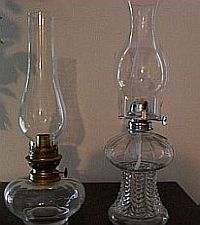
From Cumberland General Store catalog I ordered parts, wick holder, etc., with which I can make an oil lamp from a pint or whatever size canning jar or any other jar with threads around the rim. If I can find the parts (I know, I know, I should be able to put my hands on them) I'll put them in the photo. I also ordered one of the old-fashioned railroad type kerosene lanterns. Couldnít immediately lay hands on it for a picture either. I always preferred to have several strings to my bow, so to speak, even though I'd never heard the survivalist mantra, 'two is one and one is none'.
Over the years I've been happy to receive gifts of decorative oil lamps, a couple of them beside motherís above. I fell in love with one, below, that I found on a trip to Gatlinburg, TN several years ago. It's made of dark blue glazed pottery with a small hollow bottle-like piece molded to the fluted base. A wick is fed through a hole drilled through a small pebble which sits on top of the bottle and a clear globe goes over it, seated in the fluted base. While produced as a decorative item this lamp could be a source of light in a post SHTF world. Next to the wick detail is a wooden lampholder made by a craftsman in Warm Springs, GA. My sister had one in her home and nothing would do but I had to have this one when I found it.
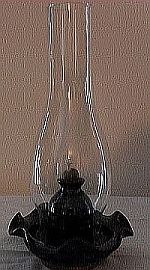
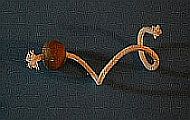
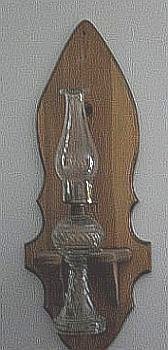
I also like candles though I believe they are a definite fire hazard. Most households have accumulated some Christmas or other type candles and with care they could be used as a light source. I was delighted when I found these wooden hurricane lanterns with glass sides and 100 hour candles a few years ago. I ordered two lanterns and two cases of the candles. I've used them a couple of times when the power was out for a few hours.
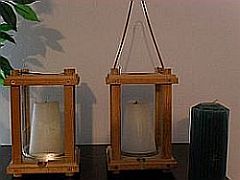
I was still concerned because no matter how many candles, how much oil you store, you WILL come to the end of your stash. I had a hand-crank radio which includes a shortwave band but didn't imagine you could produce light with cranking. But I started seeing something called LEDs and shake flashlights on the market. Then in the camping department at Wal-mart, of all places, I found a Coleman crank lantern with AM/FM radio and a cell phone charger. It produces a bright light with very little cranking. I also found a small crank flashlight which I keep in my vehicle as well as a standard battery flashlight.
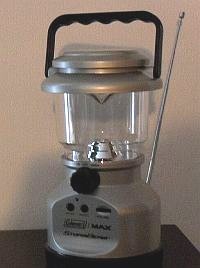
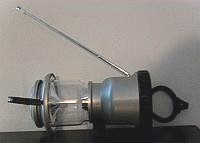
I'll probably continue to acquire any good light source I come across, but I'm fairly satisfied with my present supply.
Penwoman
www.alpharubicon.com
All materials at this site not otherwise credited are Copyright © 1996 - 2010 Trip Williams. All rights reserved. May be reproduced for personal use only. Use of any material contained herein is subject to stated terms or written permission.